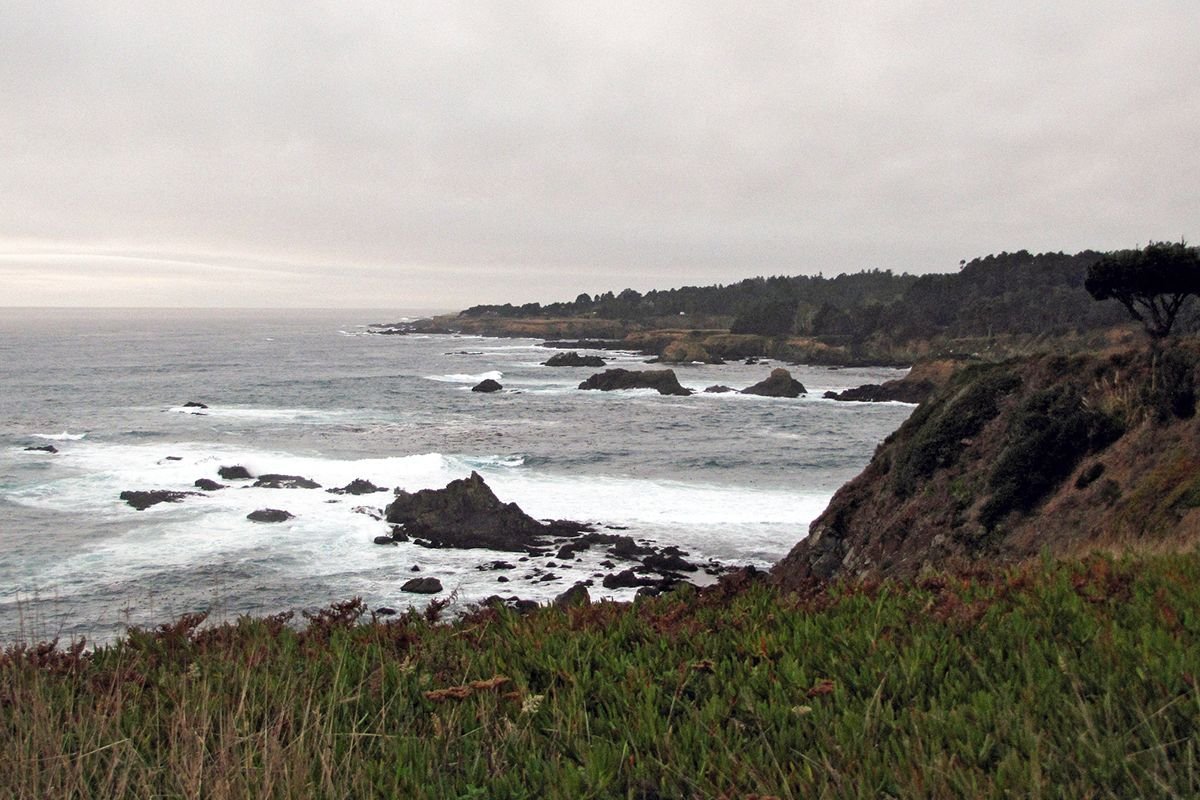Over the weekend, nearly a dozen earthquakes struck within a relatively small region just off the coast of Northern California, according to the United States Geological Survey (USGS).
The 11 quakes ranged in magnitude between 2.9 and 4.5 on the Richter scale. Tremors from 3.0 up to 3.9 are considered "minor"—although they can often be felt—whereas quakes that measure between 4.0 and 4.9 are classified as "light" on the scale.
The first of the quakes occurred beneath the ocean, around 11 miles west of Petrolia, a small community of about 500 people located in Humboldt County. It struck at 4:30 p.m. PT on Friday with a magnitude of 2.9, at a depth of 4.5 miles.
It was followed more than 10 hours later by a 4.3 magnitude quake which struck around 4 miles east early Saturday morning. After that, four more earthquakes hit the same area over the course of the day, although the last of them occurred closer to the coast.
Then on Sunday, four quakes struck in quick succession between 2:18 p.m. and 4:05 p.m. PT, all within 8 and 10 miles west of Petrolia. The 2:18 p.m. tremor was the largest of them, measuring 4.5 on the Richter scale. It was powerful enough that 240 people located as far north as McKinleyville and as far south as Mendocino reported feeling it, SFGate reported.
Finally, the most recent quake struck with a magnitude of 2.8 at around 8 p.m. PT on Sunday, over 5 miles west of Petrolia.
Another minor quake also occurred in the wider region over the weekend: a 3.0 magnitude tremor which struck 37 miles southwest of Ferndale on Saturday.
At present, there have been no reports of any damage or injuries relating to the quakes, and officials from the National Weather Service in Eureka said there was no risk of a tsunami, according to SFGate.
According to Brad Aagaard, a USGS geophysicist from the Earthquake Science Center, the area where the earthquakes struck is particularly geologically active because it is located near what's known as the "Mendocino Triple Junction," which is the intersection between three tectonic plates—the North American plate, the Pacific plate and the Gorda plate.
"From 2008 to 2018, we have had 84 magnitude three or greater earthquakes in this same region," he told Newsweek. "So this recent activity is slightly higher than the long-term average, but earthquakes tend to cluster in time and we have seen similar activity like this before.
"There are other locations in California where we see similar or even higher levels of seismic activity over a short period of time, so this level of seismic activity is not rare. In most cases, the activity decreases after a few days as it appears to have done this time," said Aagaard.
The Mendocino Triple Junction lies at the southern end of a region known as the "Cascadia Subduction Zone" (CSZ)—which stretches from Vancouver Island in Canada to Cape Mendocino, California—and the northern end of the infamous San Andreas fault. The CSZ is where the Juan de Fuca plate system—of which the Gorda plate is the southernmost fragment—meets the vast North American plate and is being pushed below it.
The USGS has created a real-time earthquake map where you can view the location of recent tremors worldwide.
This article was updated to include comments from Brad Aagaard.

Uncommon Knowledge
Newsweek is committed to challenging conventional wisdom and finding connections in the search for common ground.
Newsweek is committed to challenging conventional wisdom and finding connections in the search for common ground.
About the writer
Aristos is a Newsweek science reporter with the London, U.K., bureau. He reports on science and health topics, including; animal, ... Read more
To read how Newsweek uses AI as a newsroom tool, Click here.








